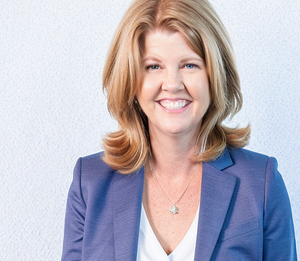So much information about project planning is tactical: which tool to use, which methodology (agile, waterfall, etc), how to track things at the correct granularity, and so on. But when I talk about project planning, I like to pop all of those balloons with a pin because sometimes all of those sexy tactics can obscure some really basic things about planning and plans. Have a watch.
The Document:
Next Up:
I suggest watching this video next:

The Transcript:
This section focuses on project planning. This is the tradecraft that you'll be using annually and quarterly and even monthly with your team to plan the work that the business is doing. There are many project planning courses and systems out there, and I bet you're familiar with them. Many of them work on the quarter system and that's because three months or 12 weeks or 90 days has some behavioral science evidence behind it as being a really good time horizon that the human mind can work towards.
Some of the planning methodology is pretty tricked out. There's criteria, weighted averages, there's columns to fill out strict procedures to follow. And the like, and there are other methods out there that are built for very specific industries, such as agile. And I see merits in all of them. But when I talk about project planning, I like to pop all of those balloons with a pin because sometimes all of those sexy tactics can obscure some really basic things about planning and plans.
And if I have a single point to make here, it is this, we need to be intentional about what we undertake. That's it. I could end the lesson here. I say this with love and non-judgment. But to my mind, one of the working definitions of a small business entrepreneur is a person who perpetually tries to put 10 pounds of shit into a five pound bag.
And I understand where this comes from. It comes from what I call the MacGyver toolkit, which is from our solo days when we hustled morning, noon, and night. And if I mentally survey my client history just here in the online space, I can literally think of two people out of dozens who didn't need an extreme make-over here. So how the plan,
the planning process misses the mark is this. Yes, they have projects lined up that work towards their vision. Yes, they have them prioritized, but where they fall short is grossly underestimating the scope of the projects and overestimating the capacity of their team. Now it's pretty obvious how this would have an impact on business growth, but I want to talk a little bit about why it contributes to a bottleneck issue for a CEO.
So here's what overestimating capacity and underestimating scope does. First. There are the people problems, burnout, distractions, other team issues, and it is on you, the CEO to step in and handle them. Then come the work quality problems. These are just the routine errors. Some are complex. Some are pretty dumb. There's work that needs to be redone.
We can blow a deadline or two. You're going to need to step in and handle some of this at the very least, or you're just watching and witnessing the impact to your business. That the work quality problems are having. Then we come to cost problems. Rework is expensive. Hiring new people at the of a hat is expensive. It can also impact sales because your intention,
especially if you're the seller, your attention is elsewhere. How are you on your game when it comes to actually selling? And so all of this, the CEO workload just skyrockets on handling the fallout and that doesn't even mention the real work that you had on your plate to begin with, which was likely considerable. So the temptation to over-schedule ourselves and our team really backfires here,
it creates the opposite of what we're intending. So the antidote is a set of best practices that are actually on the surface, the most boring and mundane pieces of advice you're ever going to hear. There is nothing tricked out about what I'm going to share with you, but it is real talk and implementing these in your business. It will be transformational and they are do less at one time,
do it until it's done ruthlessly focus on what's moving the needle for your business. And in case this is sounding like a big bucket of cold water. Gonna throw a little light into the end of the tunnel. The less you're a bottleneck, the more you get to do. So let's go through these one by one. And just remember, as we do this,
this is not intended to be paint by numbers. I'm giving you principles that you and your team are gonna need to interpret and apply to your business. They're explicit, they're tactical, but this isn't a recipe to bake a cake. Okay? Do less. At one time, I strongly recommend that you work in small batches. You can call them sprints.
If you hate the term, you don't have to call them sprints. What we're talking about is short well-defined projects that are limited in number short, very well-defined and limited in number, how limited. Well, it depends on the size of the team, but I recommend one to two major projects at one time with two to three minor ones, one to two major ones,
two to three minor ones at any one time. So what's the criteria for major and minor. Here are some things I'd like you to consider. And by the way, all of this is written on your homework in case you're scrambling for a pen right now, it will be on the homework on the sheet that you have. So the criteria that I are there for questions that I would ask myself,
as I'm trying to figure out whether something's major or minor, how much work over, how long, a time involving, how many team members and how much does it involve the CEO, how much work over, how long, a time involving how many team members and how much does it require of the CEO? That's how I would classify major and minor.
I want you to also track the projects at a bird's eye view with a three, a three 30,000 foot level so that you can limit the number and make sure that you're handling the major and minor ratios. Well, here are two ways that you can do it and I've lined up both of these in Trello. I am not pushing Trello on you. You're going to see that.
They're very easy. What Trello does is gives me a visual to give you. So it's really easy to understand, but you can do this in a spreadsheet. You can do it in Google. You can do it in a whiteboard. There's nothing technical about the tool. This is the methodology that I'm talking about. So one of the ways is to have an idea,
backlog or a project backlog that is just a list of stuff that you want to tackle. You have ones that are almost ready to go. You have some that are in progress, and this is the column where you would start to manage the major versus minor. The one to two major, the two to three minor. And then of course, when you're done,
you get to move them over to a done column, or you can archive them, just get them off your list. But this gives you a bird's eye view, especially of column number three, where you can plan and where you can make sure that you're managing the projects instead of having them manage you. Here's another way that people like to do this is simply a column per month.
And when the months, when it gets further out than maybe three or four months, we moved to a Q1 and acute to just the quarter, because we don't need as much fidelity in projects that are further out than we do in the near end ones. So this is handy because a lot of businesses have launches that happen in a certain month. It's not on-deck.
It happens in whenever it happens. Cart, open happens. Book launches happen. There are things that are wedded to a month on the calendar, and they're not really moveable. And so putting them this way will help you understand for the month of December, what's your major and what's your minor. And some of them, some of the major ones will span more than a single month and what it,
and it helps you balance the caseload. Now, a lot of folks actually like to combine the two major stuff happens via the calendar, but the smaller stuff is fitted around it. So the major stuff can go here, but the minor stuff, that's a little more discretionary can queue in these columns. And when you have some capacity, you go look at your on-deck and you're like,
Hey, look, we can tackle this one and you can move it over to the in progress thing. So some people like the combination of the two, the whole point here is to manage your projects and make sure that you're limiting the number and you're limiting the scope, the major and the minor. So the second piece of Tradecraft is to do something until it's done and then go get more work to do.
So we're going to learn how to scope projects in the next lesson, in the next piece of Tradecraft. But here, I want to acknowledge that you must scope projects well and reflect those scopes in project planning. So the small batch advice think in terms of phases, think of in terms of a version 1.0 and a version 2.0, what features would go into a minimum viable product or a version 1.0,
which features can wait for a 2.0, which features can be improved from to two phase one to two. You know, a lot of people shoot always for a super deluxe version, crash and burn, and then just settle for a few features. So they end up having a pretty limited feature set, but it's not by design. This is the intentional version of that.
It's picking a few features, knocking them out of the park and then going back and collecting another category of features and knocking them out of the park. What I want you to do is get into the habit of planning and scoping a project, expecting to complete it on time, and then crossing it off your list. That kind of team self-confidence comes out of self-discipline.
And the two of those, two of those things together self-confidence and self-discipline are going to allow you to take on the world best practice. Number three, focus on the needle movers. This sounds obvious, but it is, but it is not obvious in practice. So focus on the needle movers. When you pick your actual projects, you're going to pick projects that increase your revenue,
save you money, save you time, protect your revenue by making customers happy, but also focus on the needle. Mover features when you're scoping your projects. There's a lot of, I dunno, vanity want to have that creep into projects that can consume a lot of time. You want something to work a certain way, look a certain way, be designed a certain way.
I am not knocking that. But what I'm asking you to do is use the needle, moving criteria to understand what's going to impact a conversion. And what's not one of the things that tends to happen when people encounter enforced constraints is that it feels like a lot of things are going to get left on the cutting room floor. And that might be so,
but I want to caution you that given the same team budget and your current planning cycle, this was always going to be the case. The 10 pounds of shit was never going to fit. So instead of being disappointed in places throughout the year, you're disappointed upfront, or it hurts your can-do spirit to temper yourself. I don't want to be flippant here.
I really understand that it hurts to decide that things aren't going to happen, but I would rather have them be intentional and have them not be things that would have moved your business forward. And instead pick the ones that will, and then knock them out of the park, be ruthless about projects, justifying themselves onto your planning calendar and be ruthless about which features make it in and out of your versions.
Everything needs to earn its way on. So earning its way on can be revenue, generating revenue protecting, but it can also be time and effort savings, which means money savings. It can mean making customers happy, which keeps them buying is your business. So it's your yardstick or it's your needle, I guess I should say. You will learn to be intentional in essence,
your budgeting instead of money, your budgeting time, which is the one thing we truly can't get more of and we need to be spending wisely. So the less you're a bottleneck, the more projects you and your business gets to do. Okay. So it's obvious that as the team expands, the capacity to do more will expand because there's more doers. This is wonderful.
But also this only works when things aren't being run through you, the CEO, this should feel motivating. First of all, you're in the right place. And second of all, you'll be an eager practitioner of all that you're learning here because the dividends are paid out not only in your time and sanity bag, but a team and company that can truly scale to take on all the ideas that you have in your backlog.
So all we're talking about here is being more and more efficient with the time and the people that you do have. So let's talk homework over here. So what I would like you to start is mapping out what the next 90 days would look like if you use the best practices that I just covered. Now, if that's, if your next 90 days are already in motion and rethinking them kind of makes you kind of did something to your stomach,
I'm, let's focus on something further out. So what I'm not trying to do is make you rework what's happening next week, especially if you're taking this course during a crunch time, I'm trying to have you learn a skill and I'm not trying to throw you into a panic. So if the next 90 at the first 90 days from now, don't seem viable,
pick the next 90 and you can use, I've linked either of the, or both of the Trello boards here so that you can use them as inspiration to organize yourself. But here is the line of March that I think you should go through you and your team should go through gravity plans that you already have, or you can start from scratch. If you don't have any,
that's fine, generate a project list for the time period that we're talking about. Now, sometimes that literally is what your plans are. And sometimes it isn't, sometimes people's plans are way more vague than that. They'll say something like book launch. That's not a project, that's a topic, but we need a project list. So some are going to sound specific.
Some of them are not I'm okay with that. We're learning here. Just generate a list for that list, generate a first draft of what you think done looks like for that project. I want this to be English, so I don't need you to break out the metrics or the KPIs or the smart, measurable, whatever that acronym is. I want it to be English.
So close your eyes and tell me what done looks like for the project. And if it helps this as a sentence to begin with this project will be finished when the book launches and I'm taking pre-orders and I have five podcast interviews lined up something like that. Then I want you to go through your list and mark it as major or minor, or God knows,
or I don't know yet. Fair enough. Any one of those four is fine. And here again is the criteria for major versus minor that I went over. That is not number three, that's number five, number five star. The project that you succeed, you suspect could or should be broken into phases. So if a project is vague, larger,
long, intense, like from a bandwidth perspective, or is sounding expensive, let's use those as candidates to break them into the phase. Now we don't know how to break them into phases yet. We're going to be learning that soon, but star the ones for whom that is a really good technique or it's sounding like a really good technique. So I do not expect you to have this complete by any means by our next phone call.
This is work that you're undertaking with your team and you're running into problems. I want you to undertake it so that you can surface what you're having a trouble with or that you're, you need more clarity on and take it to our calls that we can work at three together. If it's something small or quick, or if you are in a session and you can't really move on,
go ahead and box me. And let's see if we can't shake that loose in between calls. I don't want it to hold you up, especially if you, if you feel like you're having traction, but these are the steps that I want you to start taking with your team. And we will learn more trade craft to apply to this as the work goes on.









Member discussion